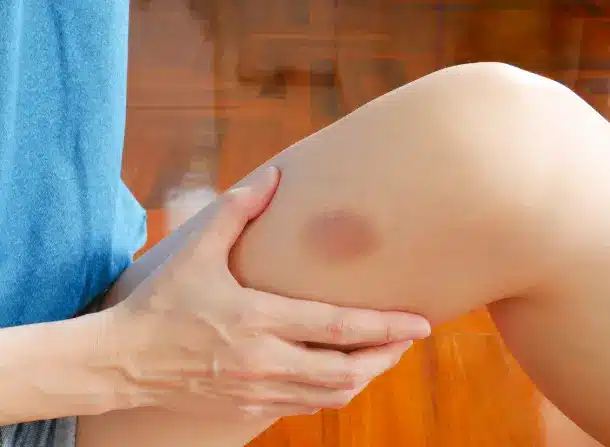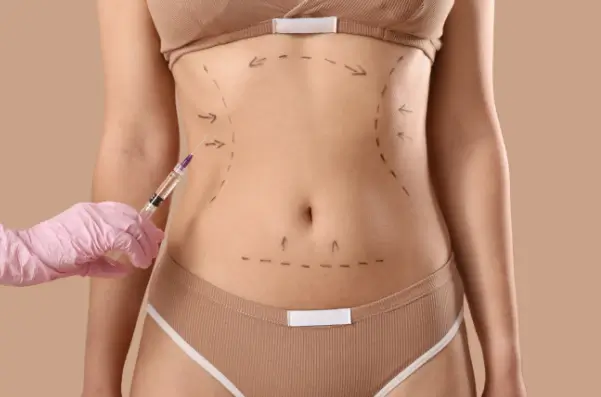In 2022, the global market for dermal fillers was valued at approximately $5.5 billion, with a projected compound annual growth rate of over 10% for the coming decade. This surge reflects a growing demand for non-invasive aesthetic treatments as individuals seek to enhance their appearance without surgery.
Among the various options, Hyacorp and Sculptra stand out. Hyacorp, a line of hyaluronic acid fillers, is renowned for its safety and long-lasting results in face and body contouring. Meanwhile, Sculptra is a bio-active filler that stimulates skin firming and tightening, requiring multiple sessions for noticeable improvements. Both have their unique applications and benefits, catering to diverse aesthetic needs.
In this article, we will compare Hyacorp and Sculptra by looking at their composition, application techniques, and the results one can expect from each.
Key Takeaways
- When comparing Hyacorp and Sculptra, it is essential to consider their composition, mechanism of action, indications for use, comparative effectiveness, patient preferences, practical considerations, and potential adverse events.
- Both fillers are commonly used for long-term soft tissue augmentation.
- Both have distinct properties that medical professionals should carefully evaluate to determine the most suitable option for their patients.
About: Medical Spa RX provides premium products at the best prices for medical practices. If you want to buy Hyacorp for your practice, the sales representatives at Medical Spa RX can guide you.
Composition and Mechanism of Action

Hyacorp fillers use hyaluronic acid, a natural substance that helps to shape and contour the body. This particular ingredient is vital for making skin look smooth and full. The product can work wonders on various body parts by enhancing their size or fixing minor imperfections.
Sculptra works differently from other fillers. Its main ingredient, poly-L-lactic acid, helps the body make more collagen. Collagen is what keeps the skin looking young and smooth. At first, Sculptra gives some immediate fullness. But the magic happens over time as it helps your skin rebuild its natural collagen.
Indications for Use

Doctors choose Hyacorp and Sculptra for different reasons. They consider each patient’s needs before deciding which filler to use.
Hyacorp is a unique filler made from hyaluronic acid that makes lips fuller and shapes the face and body. Doctors use it for non-surgical facelifts, lip augmentation, facial contouring, wrinkle reduction, volume enhancement, facial rejuvenation, and body reshaping.
Shifting focus to Sculptra, this injectable filler has its own approved uses. It improves fine lines and wrinkles, especially in the cheek region. Doctors use it for more than just smoothing skin; it’s great for restoring facial volume lost due to aging.
Doctors sometimes use Hyacorp for connective tissue disorders like lupus erythematosus and scleroderma. This differs from what it was first made for, but it helps. Sculptra works differently.
Comparative Effectiveness and Longevity
More evidence supports the use of Hyacorp in smoothing skin and making it look younger. Research shows that both these fillers were great at improving severe facial folds. This shows how influential and trustworthy Hyacorp can be for cosmetic injections and facial rejuvenation.
Sculptra shows promising results in reducing moderate to severe cheek lines. This filler, made of poly-L-lactic acid, works magic by boosting collagen production. Over time, it helps the skin get firmer and smoother.
Patient Preferences and Practical Considerations

Doctors and patients often prefer different things. This means doctors must think carefully about which filler, Hyacorp or Sculptra, best suits each person’s needs.
- Nature of Ingredients: Hyacorp is made from hyaluronic acid, naturally found in the skin. People often prefer it because it’s seen as more natural. On the other hand, Sculptra contains poly-L-lactic acid (PLLA), which stimulates collagen production.
- Duration of Results: Patients looking for long-lasting outcomes lean towards Sculptra. This filler can last up to two years or more. Those seeking shorter-term improvements might opt for Hyacorp, with effects lasting around 6 to 18 months.
- Recovery Time and Process: Some patients choose Hyacorp for its minimal downtime. They can return to daily activities sooner than with Sculptra, which might require more recovery due to possible swelling or bruising.
- Effect on Skin Texture: Individuals aiming for smoother skin texture might prefer Hyacorp because hyaluronic acid tends to provide immediate plumping effects. However, those who want gradual improvements that last longer may choose Sculptra.
- Volume Restoration: Patients wanting quick volume enhancement often select Hyacorp because it offers instant results. In contrast, Sculptra’s effect builds over time, appealing to those preferring gradual changes.
- Cost Considerations: Upfront, Sculptra might seem pricier due to its longevity and mechanism of action, but some patients may consider it more cost-effective in the long run.
- Injection Techniques Matter Too: The skill needed for injecting these fillers varies; hence, some medical professionals have a preference that aligns with their expertise, influencing patient choices indirectly.
Moving from injection techniques, doctors need to consider vital factors when picking Hyacorp or Sculptra. Each filler has its way of working and its results. For significant changes like hip dips and buttock lifts, mixing Sculptra with other fillers can work wonders.
Potential Adverse Events
After getting Hyacorp injections, people often see bruising and redness where the needle went in, so they read through Hyacorp lip reviews to see if other people experience the same thing. They might also feel some pain and notice swelling. These issues are typical and usually go away independently after a short time.
Moving from Hyacorp, Sculptra brings its own set of challenges. The most common side effects are swelling and infection at the spot where the doctor puts the filler. Sometimes, people notice lumps or small bumps under the skin where Sculptra was injected.
Medical professionals must understand Hyacorp’s and Sculptra’s safety profiles when injecting fillers. We aim to give you the key points so you can make informed decisions about these treatments.
| Aspect | Hyacorp | Sculptra |
| Primary Ingredient | Hyaluronic Acid | Poly-L-lactic Acid |
| Common Adverse Events | Swelling, redness, and bruising at injection sites | Swelling, redness, bruising, and possible lumps or bumps |
| Severe Adverse Events | Rare, but can include acute local reactions | Delayed occurrence of tiny bumps under the skin that may be noticeable when pressed |
| Mechanism of Action | Fills and adds volume immediately | Stimulates collagen production over time |
| Effect on Collagen Production | It does not stimulate collagen | Stimulates natural collagen production |
Conclusion
Hyacorp and Sculptra offer unique benefits for long-term soft tissue augmentation, with distinct compositions, mechanisms of action, and indications for use. Medical professionals should carefully evaluate the comparative effectiveness, longevity, and potential adverse events associated with each filler to enhance their decision-making process and optimize patient outcomes when using Hyacorp and Sculptra injectable fillers.
FAQs
1. What’s the main difference between Hyacorp and Sculptra?
Hyacorp is mainly used to shape the body, while Sculptra works best to fill in facial wrinkles.
2. How long do results from Hyacorp last?
Results from Hyacorp can stick around for about 24 months. It’s pretty cool.
3. And what about Sculptra? How long do its effects last?
Sculptra wins here – its effects can last up to 25 months or more!
4. Is one of them quicker at showing results than the other?
Hyacorp immediately shows off its magic, while Sculptra takes some time—usually a few weeks.
5. Do both fillers have any side effects I should worry about?
Both can cause minor side effects like swelling or bruising, but nothing too scary!
References
Faizullabhoy M, Wani G. Dermal Filler Market – By Product (Absorbable), Material (Calcium Hydroxylapatite, PMMA, Collagen), Application (Face Lift, Acne Scar, Lipoatrophy, Breast Enhancement), End-use (Hospitals, Dermatology Clinics) & Forecast 2023 – 2032. Global Market Insights Inc. Published June 5, 2023. https://www.gminsights.com/industry-analysis/dermal-filler-market
Guo, J., Fang, W., & Wang, F. (2023). Injectable fillers: current status, physicochemical properties, function mechanism, and perspectives. RSC advances, 13(34), 23841–23858. https://doi.org/10.1039/d3ra04321e
WAVE Plastic Surgery. (n.d.). Sculptra vs. Other Fillers. Retrieved from https://waveplasticsurgery.com/sculptra-vs-other-fillers/





















